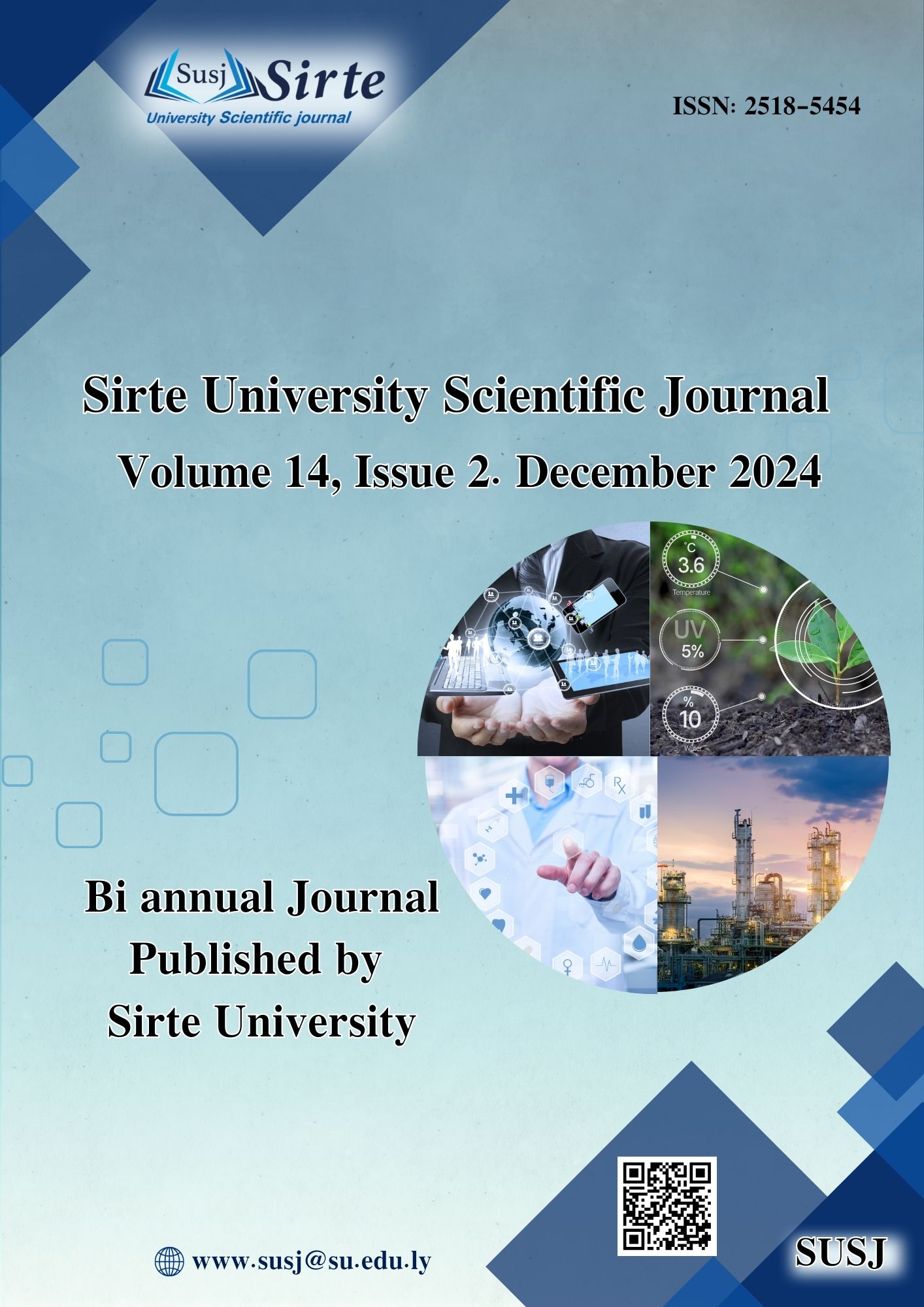Modeling of Liquid Film Behavior in Serpentine Pipe Geometry
DOI:
https://doi.org/10.37375/susj.v14i2.3082Keywords:
Liquid Film Thickness, Small-Sized Pipes, Modified Models, Gas and Liquid VelocitiesAbstract
This study investigates the behavior of liquid film thickness along a flow system under varying gas and liquid velocities. The collected data from film probes positioned at various locations of the test facility, were matched with different experimental works using the available models. It was obviously observed that the majority of published correlations didn’t present good accuracy for the data of this study, where the pipe diameter is relatively large (i.d.=101.6 mm). However, these models gave better predictions for the data of small-sized pipes (i.d. ≤ 50 mm). Due to this reason, it was necessary to modify some of the published models in order to be fit for all pipe diameters. The modified models were applied for the experimental data of the current study and for those available in a literature which presented accurate results for estimation of liquid film characteristics.
References
• Alekseev, V.P., Poberezkin, A.E. and Gerasimov, P.V. (1972). Determination of flooding rates in regular packing. Heat Transfer Soviet Research, 4, pp. 159-163.
• Almabrok A. (2023). Modified empirical models for predicting liquid film thickness in different-sized vertical pipes, Sirte University Scientific Journal (SUSJ), Sirte University, Sirte – Libya.
• Ambrosini, W., Andreussi, P. and Azzopardi, B. J. (1991). A physically based correlation for drop size in annular flow. International Journal of Multiphase Flow, 17, pp. 497-507.
• Asali, J. C., Hanratty, T. J., and Andreussi, P. (1985). Interfacial drag and film height for vertical annular flow. AIChE Journal, 31, pp. 895-902.
• Fukano, T. and Furukawa, T. (1998). Prediction of the effects of liquid viscosity on interfacial shear stress and frictional pressure drop in vertical upward gas- liquid annular flow. International Journal of Multiphase Flow, 24, pp 587-603.
• Henstock, W. H. and Hanratty, T. J. (1976). The interfacial drag and the height of the wall layer in annular flows. AIChE Journal, 22, pp. 990-1000.
• Hewitt, G. F. and Hall-Taylor, N. S. (1970). Annular Two-Phase Flow. Pergamon, Oxford, UK.
• Hewitt, G. F. and Wallis, G. B. (1963). Flooding and associated phenomena in falling film in a vertical tube. Multiphase flow symposium, Philadelphia, pp. 62-74.
• Hori, K., M. Nakazatomi, K. Nishikawa, and Sekoguchi, K. (1979). On ripple of annular two-phase flow: effect of liquid viscosity on characteristics of wave and interfacial friction factor. Bulletin of the JSME.
• Kosky, P.G. (1971). Thin liquid films under simultaneous shear and gravity forces. International Journal of Heat and Mass Transfer, 14, pp.1220-1224.
• McQuillan, K. W., Whalley, P. B. and Hewitt, G. F. (1985). Flooding in vertical two phase flow. International Journal of Multiphase Flow, 11, pp. 741-760.
• Wolf, A., Jayanti, S. and Hewitt, G. F. (2001). Flow development in vertical annular flow. Chemical Engineering Science, 56, pp. 3221-3235.





